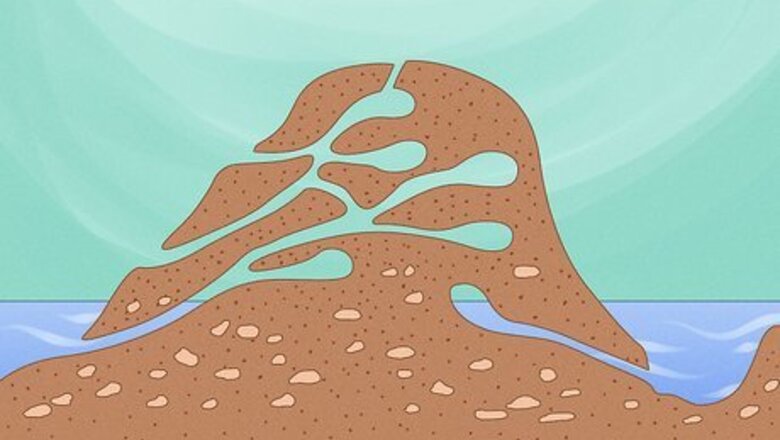
views
- Install a muskrat-proof mesh liner, decorative stones, or wire to physically keep muskrats out of your pond or water feature.
- Remove cattails and wild rice plants to get rid of a muskrat’s favorite food and send them elsewhere.
- Muskrats aren’t dangerous and if they aren’t damaging anything, you can always leave them alone.
- Check your local laws to confirm, but you’re usually allowed to kill or trap muskrats freely since they qualify as furbearing animals.
Signs You Have Muskrats
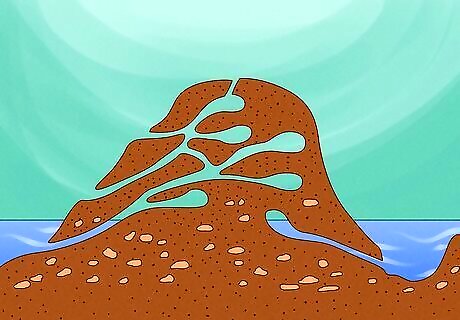
Burrows and tunnels are the single biggest sign you have muskrats. Muskrats dig complex tunnel systems where they store food, raise their young, and hide from predators. Some of these openings will appear in the ground surrounding the water feature, although you should see several tunnels at water level wherever the pond or fountain meets the ground. Muskrats spend roughly half of their time in water, so they use tunnels at the water-level to partially submerge their home underground.
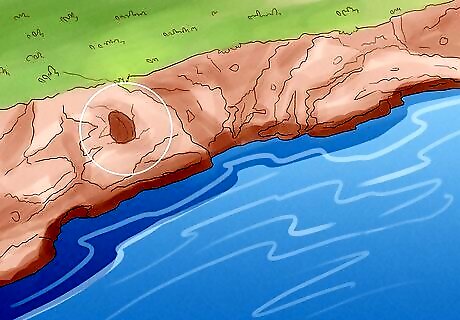
You may notice a mound built up near your water feature. This mound is called a “lodge” and it’s where your muskrat friend sleeps at night. Muskrats excavate these little structures to create a hollowed-out little home to hide from predators and raise muskrat pups. If you see multiple mounds, it’s a major sign you’ve got a larger muskrat population on your hands.
Are muskrats a problem?
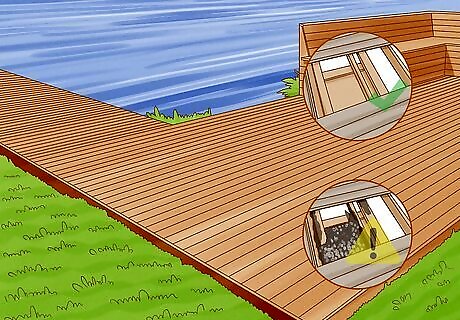
No, if they aren’t harming a dock or dam you can leave them alone. Muskrats can cause damage to structures near water, but if you don’t have a dam or dock, it’s not a big deal. Muskrats aren’t dangerous to humans and they’re productive participants in the natural ecosystem, so you don’t actually have to remove or get rid of them. Muskrats flee from people naturally. The only way one would attack you is if you corner and threaten them. It’s very rare for a muskrat to have rabies, so you don’t need to worry about that. If the muskrats aren’t bothering you, know that it’s good they’re around! They spread plant seeds, trim overgrowth, and provide an important food source for predators.
Removing the Muskrats
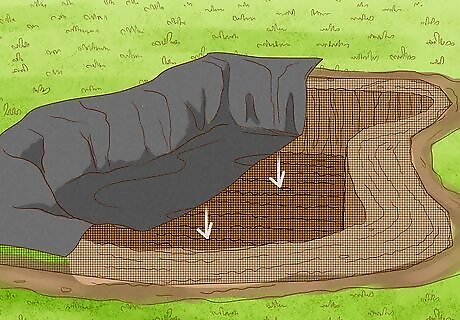
If your pond is lined with landscape fabric, upgrade to mesh. Any mesh liner made from a stronger material, like aluminum or copper, will keep the muskrats from burrowing around the water. Lay the mesh liner around the water the same way you laid your landscape fabric. If you’re laying it for the first time, buy a large roll and line the 5–10 feet (1.5–3.0 m) surrounding the water. Weigh it down with decorative rocks and you’re done! Cut the mesh liner to size using tin snips or strong scissors. Muskrats will easily chew through traditional landscape fabric and fabric liners.
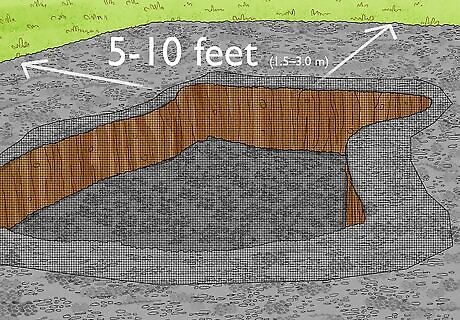
Line the water feature with heavy stones to deter digging. A stone barrier surrounding water is known as riprap. Line the surrounding 5–10 feet (1.5–3.0 m) of soil with decorative rocks. Muskrats will happily remove flowers, plants, and shrubs, but they aren’t strong or smart enough to get through stones. Make sure that the stones extend into the water for the most efficient solution.
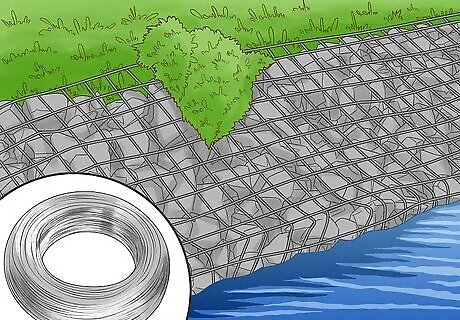
Lay galvanized wire along the bank to prevent burrowing. Purchase any kind of malleable, galvanized wire and clear out the 5–10 feet (1.5–3.0 m) surrounding the water. Cut the wiring to with tin snips and lay it flat in the soil in a grid layout. Let the wiring sit on top of the soil and weigh it down with decorative items and rocks. The muskrats won’t be able to adequately burrow in and out of the pond.
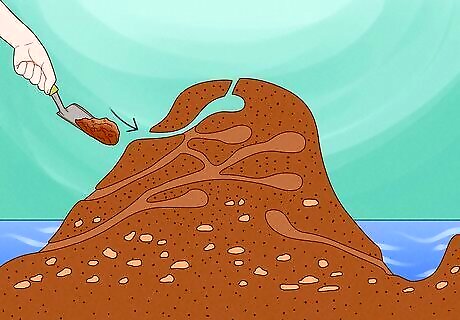
Keep filling in the tunnels with soil until the muskrats give up. This is a little more time consuming so far as solutions go, but it’s natural and won’t involve changing your water feature! Whenever you spot a muskrat burrow (which just looks like round holes), grab a shovel and fill the hole in with soil. Eventually, the muskrats will get the message that this is a terrible place to live. Muskrats aren’t particularly adept at digging, even if they do seem to enjoy doing it. It takes a while for them to dig out their tunnel systems, so they’ll give up if you’re persistent.
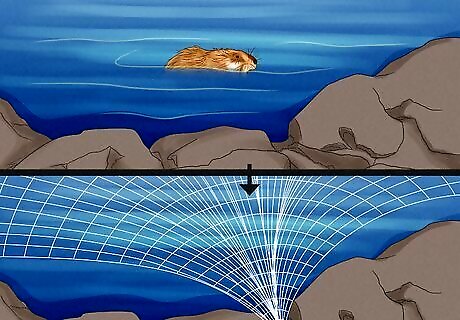
Put floating netting on the water to make it un-swimmable. Floating netting is a decorative guard that keeps animals from taking a dip (it makes leaf cleaning easier, too!). Purchase floating netting that matches the aesthetic and vibe of the landscape and drop it on top of the water. Muskrats will realize how hard it is to get around in the water and go elsewhere. This is ideal for small, decorative ponds. It can be hard to keep netting from bundling up over time if the pond is big enough to swim in. There is a potential risk that muskrats (or other animals) get caught up in the netting and hurt themselves, so don’t leave the pond unattended for multiple days in a row.
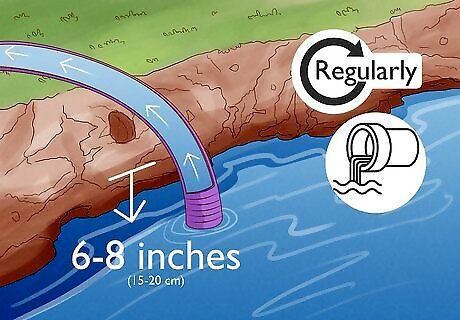
Drain or add water regularly to annoy the muskrats into leaving. Muskrats design their burrow systems to be partially submerged in water. If you add or remove 6–8 inches (15–20 cm) of water every week, the muskrats will get sick of re-digging their tunnels and move on to a body of water that doesn’t constantly change. This may be easy if the muskrats have infested a manmade pond where you can easily drain it or add water.
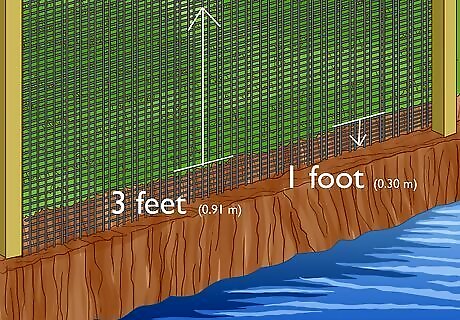
Fence off the pond and the muskrats won’t be able to get in. Purchase any kind of decorative metal fencing and install it around the rim of the water feature or pond. Muskrats can burrow, but they’re not especially smart. If they can’t get to the water easily, they won’t start constructing a home there. So long as the fence is 1 foot (0.30 m) deep and 3 feet (0.91 m) tall, the muskrats won’t get in. Muskrats can chew wood. It’s probably unlikely that a muskrat would bite through a decorative wood fence, but it could happen. Go with metal, if you can.
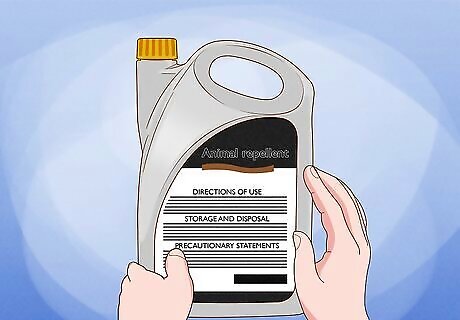
A general rodent repellent may keep muskrats away. Many people have successfully deterred muskrats with this simple solution, but note that this doesn’t work for everyone. Purchase an all-animal repellent and follow the instructions on the container to apply the repellent safely. Contact your local wildlife office or university extension group to find a specialized repellent that won’t harm wildlife in your area if you want to be extra safe. There is no evidence that natural DIY solutions like cayenne pepper, fox urine, or garlic will keep muskrats away.
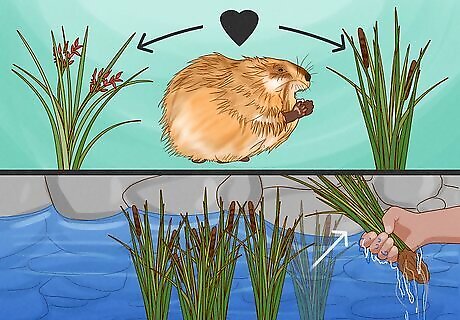
Removing the plants muskrats love can send them on their way. Muskrats eat a wide range of aquatic plants, and they’ll even eat bugs and small lizards in a pinch, but they really love cattails and wild rice. If you have either of these plants growing near your water feature, digging them out and removing them may deter muskrats. Muskrats really will eat almost anything. If you notice they’re gnawing on a particular plant in the area, digging it out and discarding it may give muskrats the motivation they need to go elsewhere.
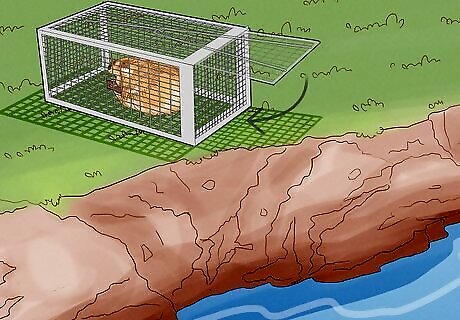
Catch the muskrat and relocate them to a pond elsewhere. Get a live trap designed for medium-sized animals, like beavers and raccoons. Set the trap on the bank of the pond and load it up with bait (apples, potatoes, and carrots all work). Once you catch the muskrat, take it to the nearest body of water and release it. Muskrats are nocturnal, so check the trap every morning to see if you’ve caught anything. You can do this on your own, but you’re likely better off hiring a pro to do this. Live trapping is a bit of a tall order for the average person. Muskrats breed very quickly, and there may be up to 15 pups living with the adult you capture. You may just end up with more adult muskrats soon, or the litter may perish without their parent.
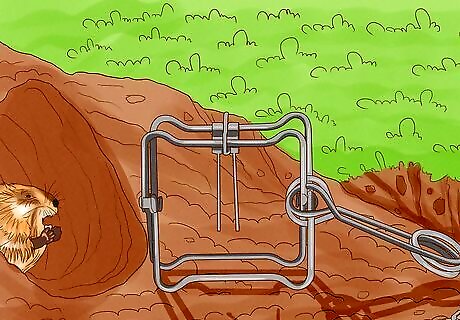
Muskrats are usually legal to kill if you want to exterminate them. Check your state laws and local ordinances to be sure, but muskrats typically qualify as furbearing animals—which you’re free to trap or kill. Set up a no. 110 body-gripping conibear trap at the water-level entrance to their den. The trap will catch the muskrat’s head or body and kill them quickly and humanely. Incinerate or bury each carcass and continue resetting the trap until the muskrats are no longer a problem. If you don’t want to kill the muskrats yourself, contact a local trapper or fur company. They may come catch or kill the muskrats for you.
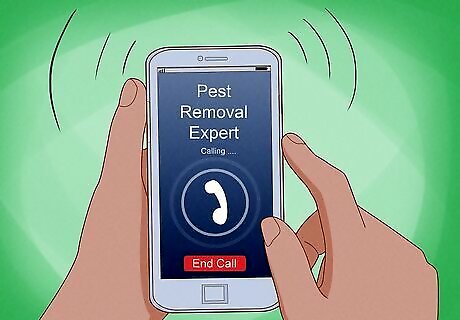
If you can’t figure out how to get rid of the muskrats, call a pro. Muskrats can be persistent little critters, and there’s no shame in getting some help if you can’t get rid of them on your own. Contact a pest removal expert near you and ask if they have experience dealing with muskrats. If they do, hire them to help you muskrat-proof your home.




















Comments
0 comment